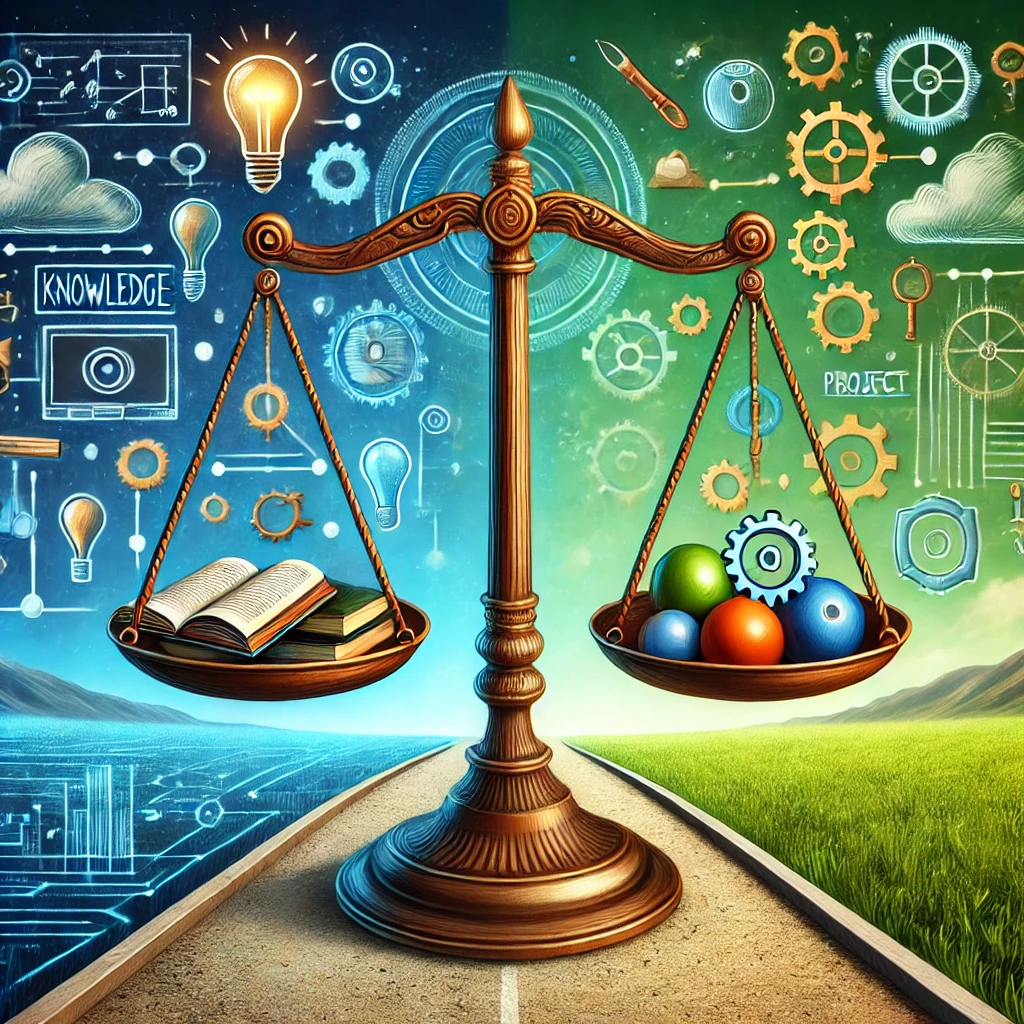In an increasingly fast-paced world, the pursuit of knowledge has become more accessible than ever. However, with the ease of access to information comes the challenge of effectively applying what we learn in the real world. Striking the right balance between acquiring knowledge and putting it into practice is essential for both personal growth and professional success. This article explores how you can master this balance and turn learning into actionable, meaningful outcomes.
Understanding Knowledge Acquisition
Knowledge acquisition is the process of gaining new information through study, experience, or instruction. It is the foundation upon which all personal and professional growth is built. Whether through formal education, self-study, or experiential learning, acquiring knowledge broadens our understanding of the world and equips us with the tools to solve problems and innovate.
But there’s more to learning than simply absorbing facts. For knowledge to be effective, it needs to be processed, organized, and linked to previous knowledge. This step ensures that what we learn can be retrieved and applied when needed. Without a clear understanding of how to integrate new information into our existing mental framework, knowledge acquisition becomes shallow, and its practical benefits diminish.
The Role of Practical Application
Practical application refers to the process of using the knowledge you’ve acquired in real-world situations. It involves problem-solving, critical thinking, and creativity, which transforms theoretical understanding into functional expertise. While knowledge acquisition provides the “what” and “why,” practical application focuses on the “how.”
There’s an inherent challenge in moving from the safety of learning to the uncertainty of doing. Application often comes with trial and error, failure, and adaptation. Yet, this process is invaluable because it refines your skills and deepens your understanding. When theory meets reality, it transforms into mastery.
For instance, learning the principles of coding is one thing, but building an actual software application forces you to address bugs, improve efficiency, and think creatively. Without this hands-on experience, knowledge remains abstract.
The Intersection of Theory and Practice
The synergy between knowledge acquisition and practical application is what drives progress. Theory provides the foundation, but practice brings clarity and innovation. For example, scientific breakthroughs often begin with theoretical research that is later tested in experiments. Likewise, in the business world, strategic plans need to be implemented and adjusted based on real-world feedback.
One of the most effective ways to balance knowledge and action is to adopt a cyclical learning approach. Learn something new, apply it immediately, then reflect on what worked and what didn’t. This method allows you to iterate, which solidifies your learning and enhances your ability to apply that knowledge in different contexts.
Challenges in Balancing Both
Striking the right balance between knowledge acquisition and practical application isn’t always easy. One of the most common challenges is the tendency to lean too heavily in one direction. Some individuals or organizations focus excessively on learning, constantly seeking new information without applying it. This can lead to paralysis by analysis, where the sheer amount of information overwhelms decision-making and action.
On the flip side, over-prioritizing action without adequate knowledge can result in ineffective outcomes. Decisions based on insufficient understanding can lead to costly mistakes. Therefore, it’s essential to assess when to shift from learning mode to doing mode and vice versa.
Knowledge Acquisition Without Application
Many people fall into the trap of endlessly acquiring knowledge without ever putting it to use. In today’s digital age, information is available at our fingertips, making it easy to fall into the habit of consuming content—books, articles, podcasts—without actively engaging with it.
This “knowledge hoarding” can create a false sense of accomplishment. While it feels productive to learn, the real value of knowledge lies in its application. Without the opportunity to practice what you’ve learned, knowledge remains theoretical and doesn’t contribute to meaningful change or growth.
For example, you might read multiple self-help books on productivity, but until you start implementing the strategies, such as time-blocking or prioritizing tasks, your day-to-day productivity won’t improve.
Practical Application Without Sufficient Knowledge
Conversely, jumping into action without sufficient knowledge can lead to hasty decisions and prevent long-term success. While hands-on experience is a great teacher, it should be supplemented by a solid theoretical foundation. Acting without understanding the “why” behind your actions can limit your ability to adapt and innovate.
Take entrepreneurship as an example. Many business owners start with a great idea but lack the knowledge about market research, financial planning, or customer acquisition. Without this essential background, they may struggle to sustain their business in the long term, despite their efforts.
Why the Balance Matters
The balance between knowledge acquisition and practical application is vital for sustainable growth. Without knowledge, practical efforts become aimless, while knowledge without action remains stagnant. Balancing both allows you to maximize your learning potential and achieve real-world results.
The key lies in understanding that learning and doing are not separate processes but interconnected. When we apply what we know, we gain deeper insights, and when we acquire new knowledge, we are better equipped to apply it effectively.
You Can Also Read : How to Gain Expertise in Any Subject with Focused Learning
Strategies for Balancing Knowledge and Action
Achieving a balance between knowledge acquisition and practical application requires intentionality. Here are some strategies that can help:
- Set Clear Learning Goals: Define what you want to achieve with your knowledge. Is it to solve a specific problem? To develop a new skill? Having a clear purpose will guide both your learning and application.
- Apply As You Learn: Rather than waiting until you’ve mastered a subject, start applying what you learn immediately. This approach helps you see the relevance of the knowledge and reinforces your learning.
- Reflect and Iterate: After applying new knowledge, take the time to reflect on what worked and what didn’t. This feedback loop allows you to make adjustments and continue improving.
- Time Management: Allocate specific times for both learning and applying. Avoid spending all your time acquiring knowledge without leaving room for action.
In the following sections, we will explore these strategies in greater depth and discuss how you can integrate them into your personal and professional development.
Time Management for Learners
Time management is a critical skill when balancing knowledge and application. The key is to allocate time effectively so that neither learning nor action is neglected.




